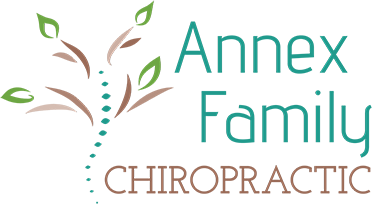The buzz is loud. Minimal shoes, while still making up a small portion of running shoes sold, have exploded in the marketplace, increasing in sales by 1,800 percent in the past two years.
Some people wonder whether the minimalist movement should have a youth brigade. Is it something we should be experimenting with, avoiding or mandating? While I can’t give definitive answers for each child, I can provide some details on physical development during childhood and how footwear might influence that development. Before we debate the merits of minimal shoes vs. protective shoes (with or without flashing lights and built-in squeak toys), we should discuss normal physical development. The alignment of your kids’ limbs changes over the years. A lot. When they pop into the world, they’ve been crammed inside a space smaller than a basketball. Obviously they’re weak and nowhere near capable of supporting themselves in standing against gravity. Soon, though, they begin to improve their strength and smooth their movements. What starts out as an uncontrolled, erratic flopping of a hand turns into a wave. Sitting and crawling improves core strength — spend each day on all fours and you’ll be amazed at how strong your core becomes. Eventually, your little ones stand and cruise the coffee tables, and before you know it, they’ve taken their first steps and are playing soccer. What goes on behind the scenes during these early years? Bones don’t just get longer, they also change shape as your child develops. Being crammed inside that basketball for nine months means the limbs had to get out of the way. Newborns have very high arches and bowed legs. As kids learn to stand and walk, gravity pushes down on their bodies. In fact, gravitational pull is strong enough to almost reverse this leg alignment. Around age 4, kids typically have pronated feet and knock-knees. And as their activity increases, individual muscles get stronger. Even though your kids are small, their muscles are capable of generating hundreds of pounds of force, enough to change the alignment of their bones. By the time they’re 7 or 8 years old, their bones have changed yet again and more resemble those of a typical adult. Bone alignment changes are a healthy, normal part of human development and not something to be afraid of. In the old days, a lot of folks were afraid that their child’s legs were developing incorrectly. My older cousins had pain in the front of their knees growing up, and every one wore braces for a few years to “reshape” their legs as they grew. Even though they had nothing wrong with their legs, it was fairly common practice back then. These days, any kid with the same diagnosis (Osgood-Schlatter disease) wouldn’t be braced. Modern medicine realizes that there’s no single best leg alignment to prevent injury and that it’s more important to allow natural development. Stiff and Misshapen Medicine has become more open-minded in its stance on changing limb alignment, but, unfortunately, we still feel the foot needs braces and binding to develop properly. In essence, we still practice the ancient art of Chinese foot-binding. Glance over at the foot of any newborn and you’ll notice that the widest part of their foot is not the ball of the foot but their toes. Then take a look down at your foot. You’ll likely notice that these feet don’t look the same. The narrow toe boxes in athletic and fashion footwear have changed the alignment of our feet, just like braces once did to legs. We’ve been taught that a pointy shoe looks normal — both fashionable and fast — and we’re willing to change our foot shape to accommodate this look. In addition to shoes that bind the foot and change its shape, we typically put kids in shoes that are too stiff to allow natural flexion. Typical running shoes are produced for a man weighing 150-plus pounds and a woman weighing 130 pounds or more. Many of the same materials are used in the construction of shoes meant for kids who weigh a fraction as much. And the smaller physical size means that all that stitching and those material attachment points net a much stiffer shoe than the adult versions. Kids don’t have the physical weight to flex these shoes. Is this a problem? Yes. The foot is designed to move. And that movement helps strengthen the muscles, which in turn impact the changes in our natural alignment throughout our development. I’ve had the privilege of working with a number of runners who grew up sans shoes, and their feet are different from ours. As adults, these runners don’t rely on stiff shoes because they’ve developed strong, stiff feet. Years of barefoot movement have resulted in robust muscular attachments to anchor and stabilize the foot. The average Western foot — having grown up dependent on shoes — pales in comparison. In today’s society, footwear is a necessity due both to customs and underfoot hazards — try sending your kids to school barefoot. But that doesn’t mean narrow, stiff-soled, over-cushioned shoes are necessary. No matter what your stance on minimal footwear, it makes sense that we should let the body develop normally. And we’ve got a few million years of data to support that.By Jay Dicharry
As featured in the September 2012 issue of Running Times Magazine



